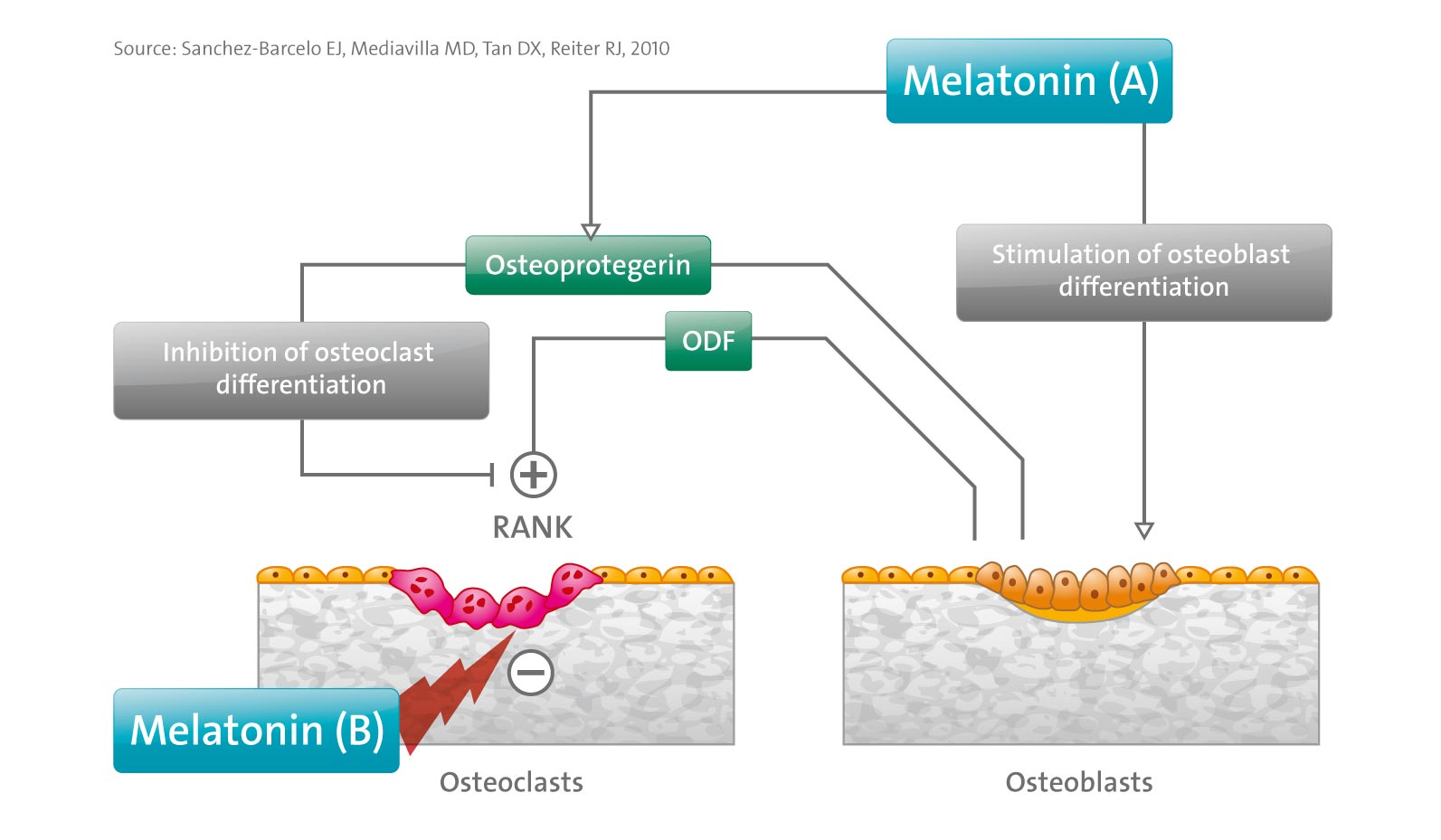The objective of this paper was to analyze the data supporting the possible role of melatonin on bone metabolism and its repercussion in the etiology and treatment of bone pathologies such as the osteoporosis and the adolescent idiopathic scoliosis (AIS). Melatonin may prevent bone degradation and promote bone formation through mechanisms involving both melatonin receptor-mediated and receptor-independent actions.
The three principal mechanisms of melatonin effects on bone function could be:
-
- (a) the promotion of the osteoblast differentiation and activity;
- (b) an increase in the osteoprotegerin expression by osteoblasts, thereby preventing the differentiation of osteoclasts;
- (c) scavenging of free radicals generated by osteoclast activity and responsible for bone resorption.
A variety of in vitro and in vivo experimental studies, although with some controversial results, point toward a possible role of melatonin deficits in the etiology of osteoporosis and AIS and open a new field related to the possible therapeutic use of melatonin in these bone diseases.
